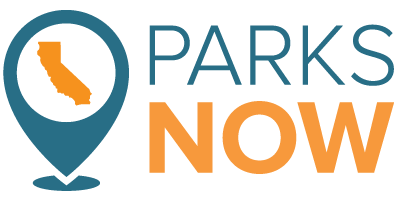In praise of parks, and seeking state leadership
by NINA ROBERTS
Parks should be the crown jewel of every neighborhood.
Anyone who lives near a great neighborhood park understands their importance. They provide places for family and friends to socialize and activities for our kids that build leadership, teamwork, and improve focus in school. In urban areas in particular, they provide welcome reprieve from an otherwise dense and often noisy environment. They teach us about the significant role that natural systems play in our daily lives.
Despite all of this, many urban parks in California remain unpolished gems, often in those communities that need them most. Now, with the final release of highly anticipated Parks Forward Commission recommendations coming at the end of this month, we have a unique opportunity to make urban parks across California shine.
Take, for example, Candlestick Point State Recreation Area here in San Francisco, a park I visit as often as possible. Folks who live near Candlestick Point will tell you it desperately needs some tender lovin' care. Sections of the park remain in disrepair, and there are no facilities or programs that meet the needs of the neighborhood it surrounds. Instead of providing a consistently safe place for children to play, the park frequently attracts illicit behavior.
It is deeply frustrating--and a missed opportunity--that this urban park with such a spectacular view of the Bay (and within walking distance of so many people) is underutilized, when it could be a hub of vibrant activity for adjacent neighborhoods, much like the iconic Golden Gate Park.
Even more troubling is that Candlestick Point is representative of many urban parks throughout our state--parks of all sizes that too often fall short of their promise to provide safe and healthy places for folks to rest and recreate, especially in poorer and racially diverse communities.
While efforts in the past to create new parks over the years have been laudable, our park systems too often lack the leadership, resources, and creativity to make parks the continued focal point for diverse urban communities. How do we change this dynamic during a period marked with so many competing demands on our collective resources?
The answer is really not that complicated. It involves engaging people by listening to their needs. It involves asking the community what they want to see in their parks. It requires a deep, honest, and continued conversation between park professionals and the communities they serve to better understand neighborhood needs while building trust and support.
In developing its recommendations to transform California's state park system, the Parks Forward Commission undertook this important conversation. The Commission has listened to Californians -- from every region and every demographic group -- to propose viable solutions for keeping our parks open, well maintained, and welcoming to all Californians.
Its final plan is due out at the end of January, and if recommendations mirror the direction of previous drafts, the future for parks in California is hopeful. The Commission has repeatedly emphasized the need to expand park access to all Californians, particularly those in more urban and racially diverse communities. Many would agree, this is a growing civil rights issue of our time that requires immediate attention, and all signs indicate that the Commission understands.
But recommendations from any Commission report are nothing if our political leaders do not embrace them and act upon them rapidly and with full force. Now that Parks Forward has taken the first big step toward reforming our state park system, we must watch to ensure that the California Department of Parks and Recreation -- and our leaders -- swiftly move what's on paper in to action.
This can be a hopeful time for parks. The opportunity to make a new difference has arrived, but it is up to us -- and our political leaders -- to seize it.
Nina Roberts is a professor at SF State and director of the Pacific Leadership Institute.

